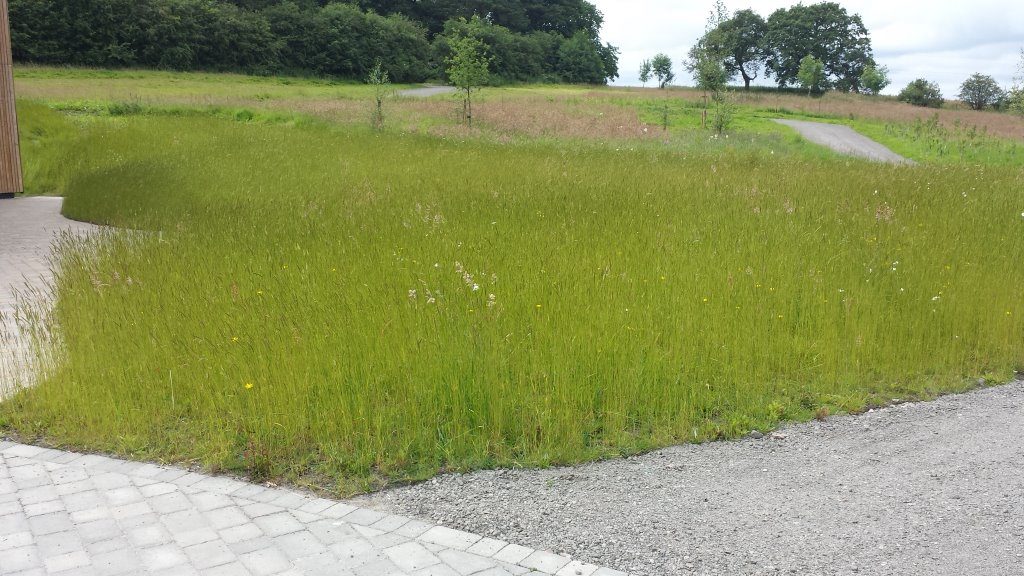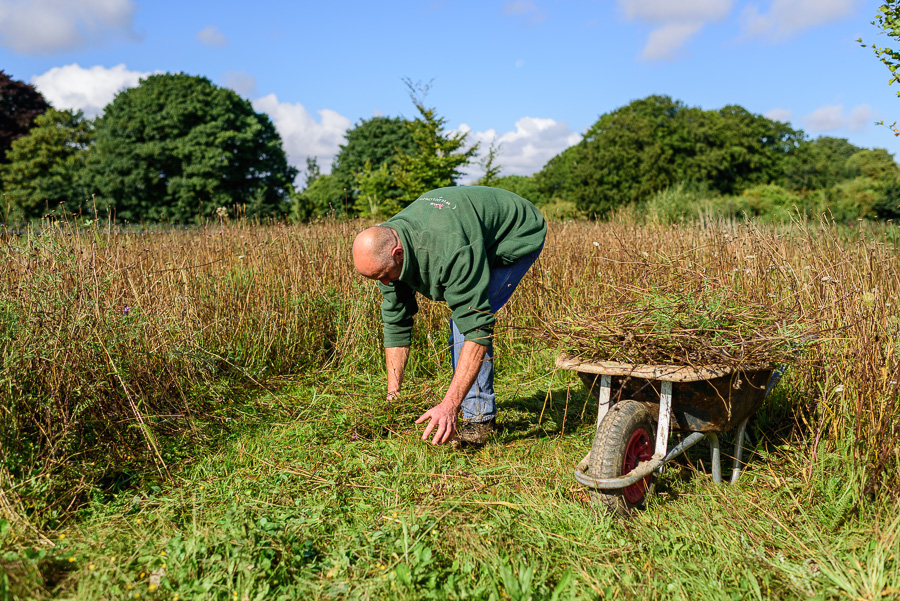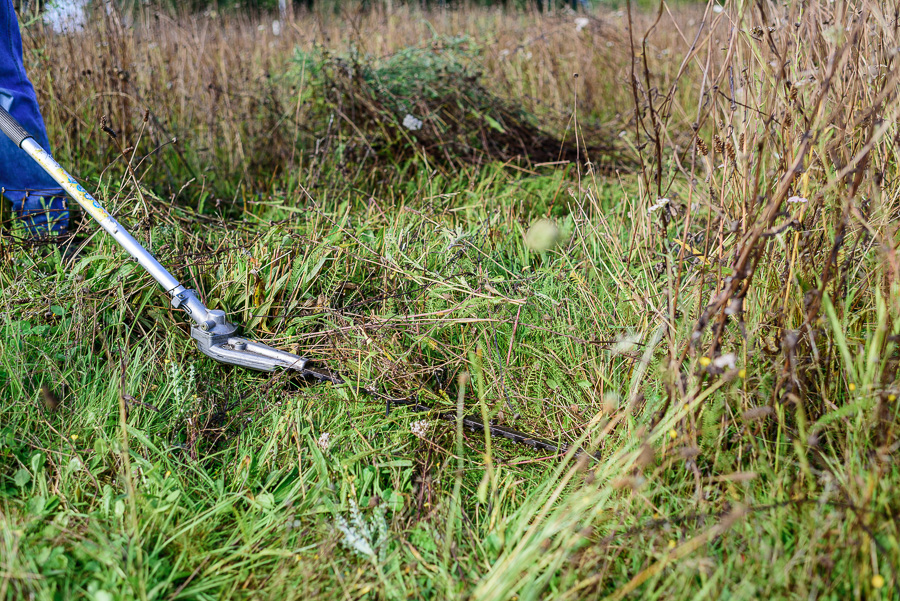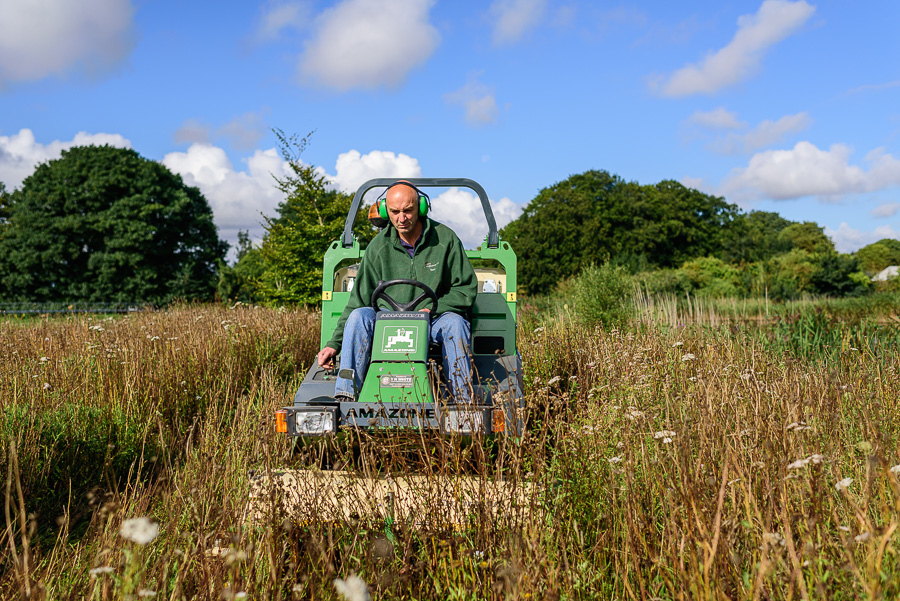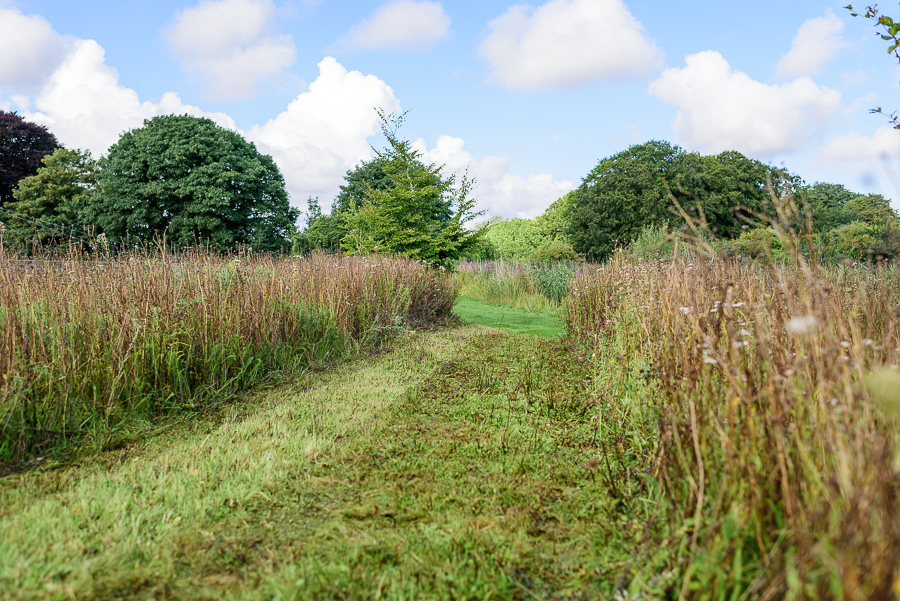This blog will take you through the steps of maintaining a wonderful wildflower meadow over the summer months. If you are keen to find out even more about Wildflower Turf, look out for our book which will be published later on this year.
A single end of season cut is essential, however, you may feel one of the below mid-season cuts is appropriate.
Summer Cut – Suitable for Rapidly Growing Meadows
This maintenance cut is a little bit of a leap of faith as the meadow may well be looking at its best right now. Cutting with a strimmer with a hedge trimmer attachment is the perfect type of tool to use taking the top layer off, to a height of 20-30cms. The purpose of the cut is to take off a large proportion of the young green material that has not experienced leaf shatter – a very effective way of depleting nutrients. You will see plenty of flowering buds under this level and the flowers will be quick to re-establish. You must be quite sensitive when forking off the material from the meadow, raking is not advised for clearance. With this cut, you will definitely lengthen the flowering period of the meadow, whilst improving the flower to grass ratio for the following season.
A result of high fertility or too much water during the establishment phase.
Clearing away the cutting on any cut is vital to deplete nutrient levels.
Late Summer Cut – Scruffy Meadows/Drought Years
In some people’s eyes, senesced growth (browning vegetation and seed heads) can look scruffy. A cut at this time of year can tidy up the whole area. It will be of great benefit to the late flowering species within the meadow such as toad flax, mallow, yarrow, vetch, clover and scabious. Take the browning vegetation off to about 5-10cms. Once you have cleared the cuttings give the area a really good water. Within days you are likely to see the whole area green up again and flowering will continue until your final maintenance cut in the Autumn.
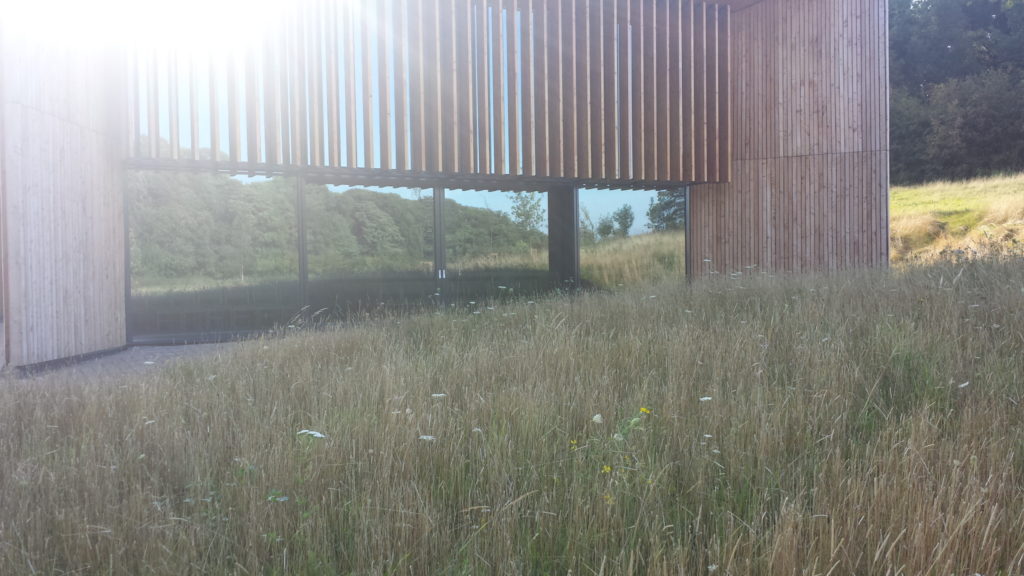
If your wildflower meadow starts to look brown/scruffy, simply give it a high cut.
Final Yearly Maintenance Cut
Whether you have decided to make maintenance cuts earlier in the year or not, you will always need to do a final maintenance cut for the year in late summer/ early autumn after the wildflowers have set and shed their seed. This cut is essential for the health of the meadow, not only does it tidy up the area for the winter but it stops the senesced summer growth from covering the growing plant in a layer of rotting green material. If this material isn’t removed it will act as a barrier for the regrowth of the parent plant and also reintroduce a level of nutrients that is best avoided. An open sward over the winter ensures healthy, disease free plants which can benefit from what light and warmth is available to them during these months. If you have not cut the meadow previously in the year you will find that some of the stems are dry and tough, making it more difficult to cut.
Once cleared you will find that your meadow starts to grow again although how much regrowth will depend on the time of the cut, soil fertility, moisture levels and the weather. This is because some species will be quick to utilise any freshly created space, thus taking advantage of the new opportunity that they have been given. Allowing the meadow a chance to green-up ready for the winter is a good idea before it then becomes dormant with little or no growth through the winter. When spring approaches, the wildflowers are in the perfect position to develop quickly and repeat their perennial cycle thus guaranteeing a wildflower meadow year after year.

After depleting nutrients and reducing grass content, this meadow was allowed to flourish more impressively in its second year.
TOP TIPS FOR FINAL YEARLY MAINTENANCE CUT:
- When planning your maintenance cut, choose a dry day, you will find it lighter and cleaner to clear the cuttings.
- Be thorough with your clearance. The aim is to deplete nutrient levels to continue to keep the wildflower to be competitive and limit grasses and nutrient loving plants such as fat hen and docks. Rotting material left on site will also be a haven for pests such as slugs.
- When clearing the area with a rake, it is fine to treat the ground and plants roughly, this will pull out any thatched material and provide light and air to the roots. The plants are hardy and will not be affected by some tough love.
- Do take care, especially for amphibians within your meadow. A staggered cutting program will help – cutting half the area one day and then delaying the second half for a week or two will allow fauna to migrate to the uncut area. By the time of the second cut, the first cut area will have some regrowth to provide a beneficial habitat.
- If you are using the cuttings for compost and they feel particularly dry, give them a soaking as they will break down better with moisture.
- As a final tidy up a good rake is worthwhile, or a quick and easy option is to run a rotary mower with collectors over the area.
- Once you have completely cleared the area you may find bare patches. These are perfectly acceptable. They may look unsightly for a little while, but the chances are there is something dormant underground waiting to get going again in the spring. If you do want to enhance the area with plugs you can use this sort of area to plant in as there will be less competition.
- Be vigilant with leaf and fruit removal after your Autumnal cut. It will be much easier once you have removed the senesced meadow material to clear falling leaves but do not leave them to rot down and add nutrients to the soil or provide a potential risk of disease.
Cutting and removing, using an Amazone Profihopper.
Mown tight and ready for the winter
Flourishing again the following June.
